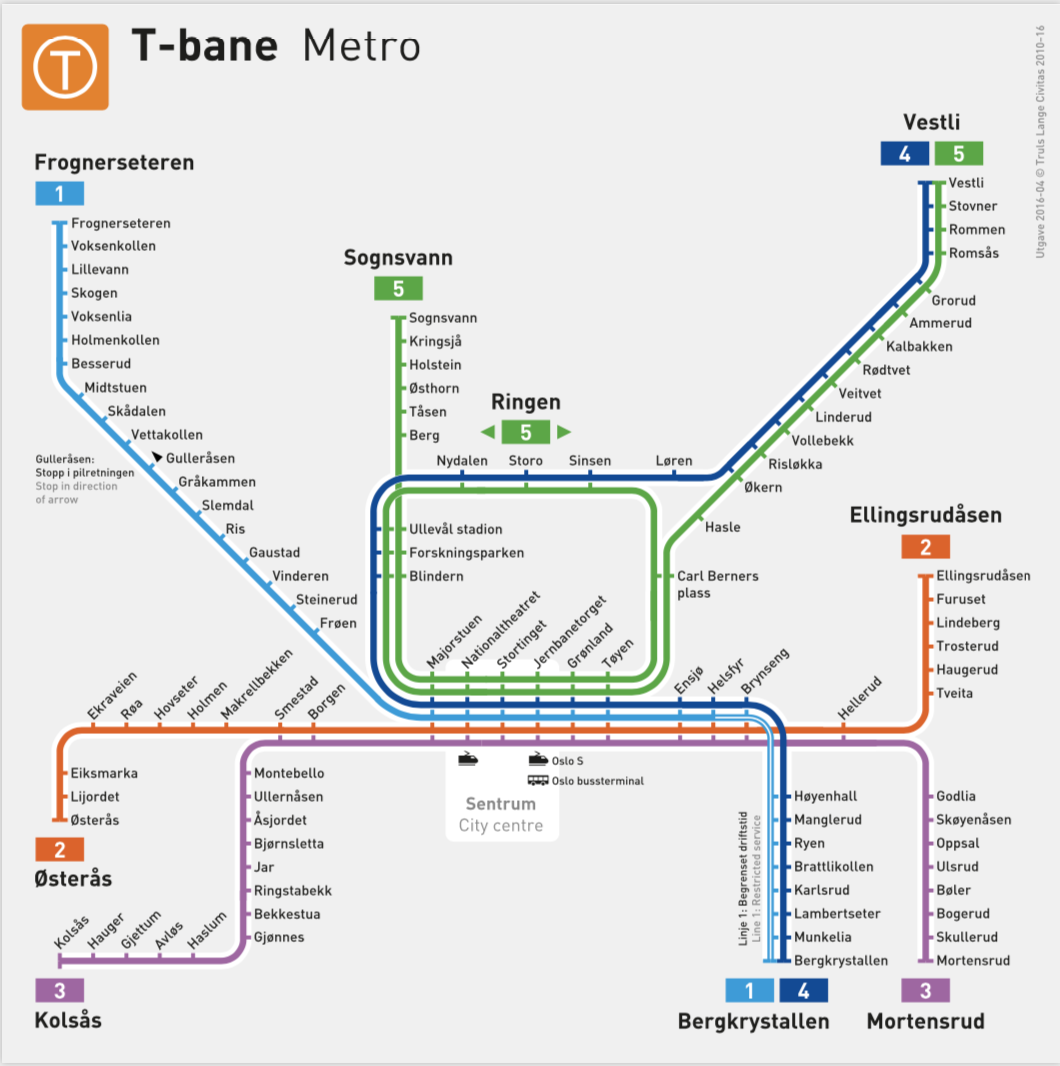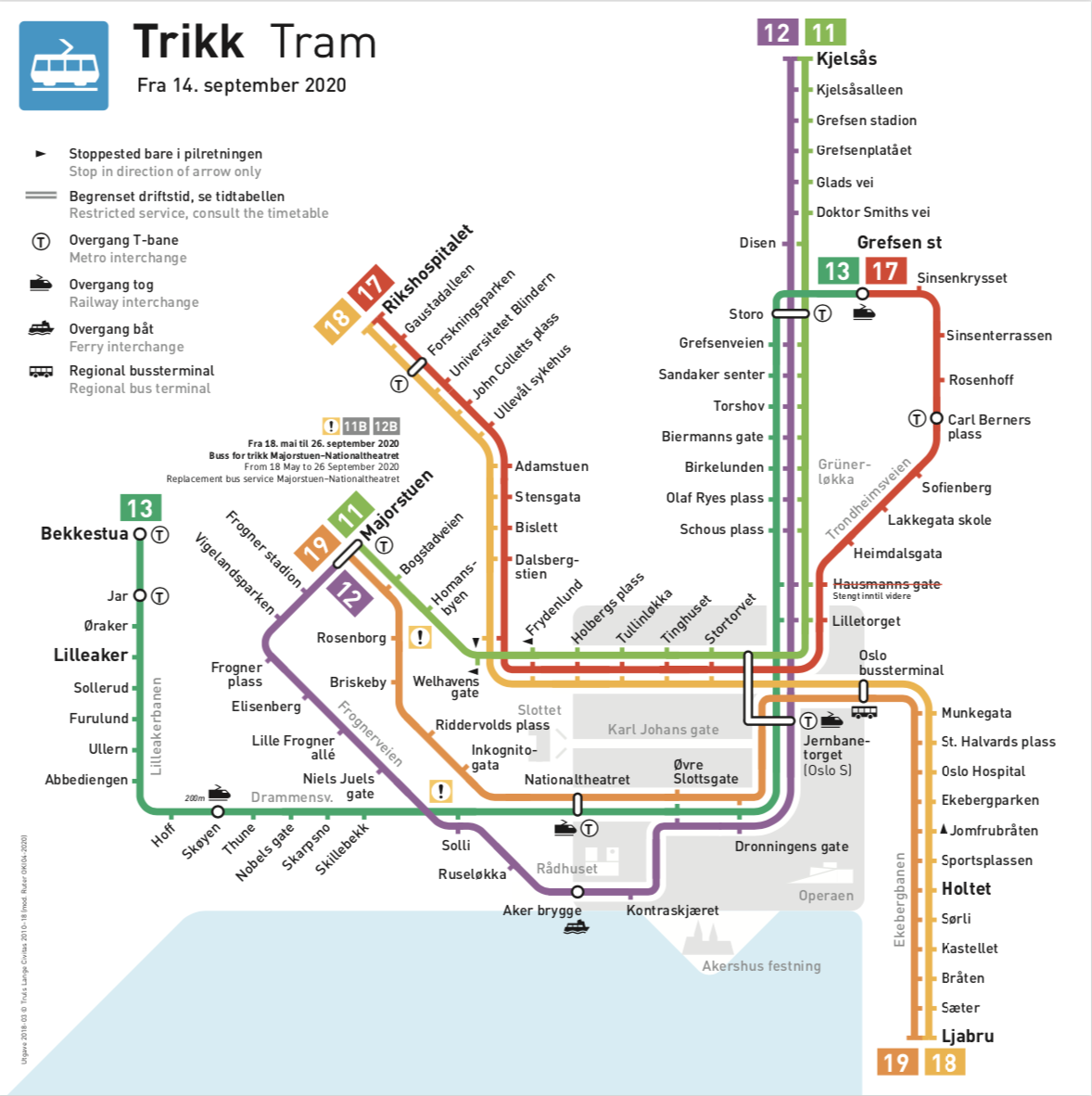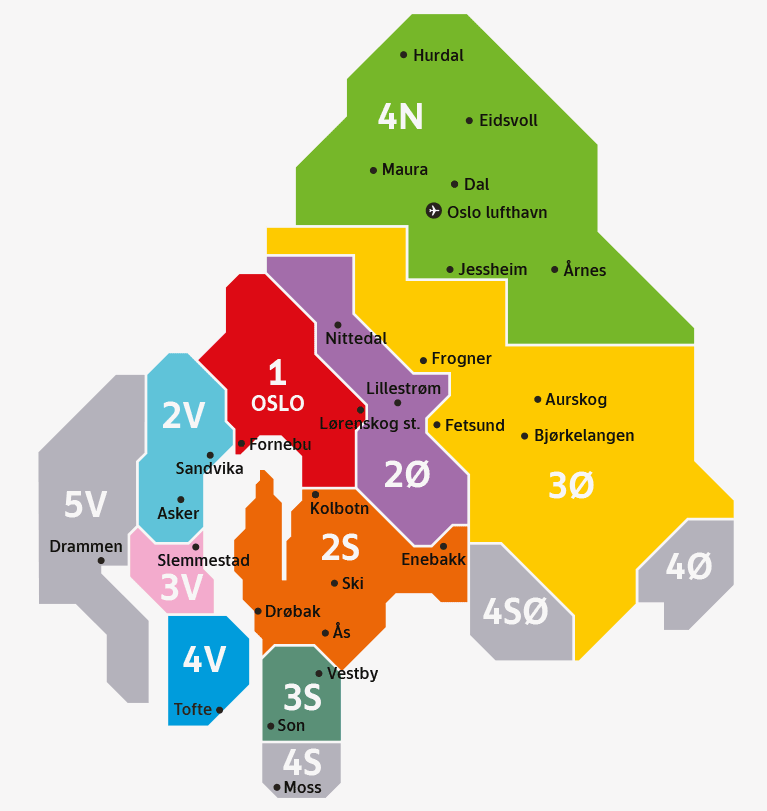Living in Norway: Everything you should know about renting in Oslo

Hunting for a new home to rent can be a daunting challenge in many cities and Oslo fits that bill. But knowing a few simple things can help you on your way, writes Agnes Erickson.
The hunt for a new home can be stressful. It demands research and is a time-consuming task that is riddled with the uncertainty of knowing if you have made the right choice up until moving day. This can be said in most cities and is also true for Norway’s capital, Oslo.
Oslo is a popular city for foreigners with a high international population, rich cultural scene and many job opportunities. It can be helpful knowing a little history of the city and being aware of what to look out for when looking for your next place to live.
The different districts
Oslo can be separated in many ways and one of the most popular is the east side and west side. Akerselva is a river running directly through the city from north to south. Historically, the more established residents lived on the west side of the river and the labourers and industries were found on the east side. The river divide no longer separates the classes as much as it used to. Like in most cities, many of Oslo’s neighbourhoods have gentrified and built their own reputations. Despite this fusion, vestkant and østkant (west side and east side) are still terms used when describing a specific area, person, or thing.
Districts on the westside such as Marjorstuen and St. Hanshaugen are popular for students, new families and workers. They are centrally located, close to universities like UiO and Oslo Met and are areas with many popular cafes, shops and restaurants.
Farther east, there are districts like Skullerud and Bøler. Rent prices can be cheaper in these areas. They are perfect if you are a nature lover but like the convenience of the city. Eastern districts farther from central Oslo have beautiful lakes such as Nøkkelvann and Østensjøvannet and the forest within walking distance from a lot of the metro stops.
The city is also separated by designated toll rings. Ring 1 is considered to be within the most central parts of Oslo and ring 3 is found on the outermost parts with ring 2 in the middle. Parking spots are limited and the most expensive in ring 1. If you own a car it would be helpful to research if there are parking spots for residents, or what the street parking around the place of residence is like. Also, refer to a zone map when calculating transportation costs for possible housing options.
Visninger
Visninger or viewings, are typically a public event. You can request a private wing but are not guaranteed one. The most common place to look for housing options is Finn.no, while Hybel.no is also an option.
Viewings are commonly hosted by a real-estate agent during office hours and on the weekends. Each viewing is open for visitations for around two hours. They can be very crowded and difficult to get an accurate view of the housing. Take your time and ask any questions you want answered to the realtor. If you are interested in renting the accommodation you put your name on a list at the viewing and the real estate agent will contact you with additional questions or if you have been chosen.
The rental market, just like the buyers' market ,is fast-paced in Oslo, which unfortunately doesn’t always lend itself to taking your time before making or accepting an offer.
Think about public transport
Oslo is a relatively small city and there are multiple options for getting around. Oslo offers a bus, tram, metro, and even boat transportation. All of which are included when you purchase a ticket. Ticket prices and packages can be found at Ruter.no. The city may boast excellent transportation options, but don’t forget to research this while looking for a new home. Interactive maps of Oslo’s public transportation offerings can be found at Ruter.no.

If you are not keen on traffic noise, try and stick around at the showings for a while to check if you can hear the public transportation within the building. Also, check where and how far the nearest public transportation stop is before renting. A 15-minute walk may feel like a breeze during the summer months but can be more challenging in the wintertime.

What's the worst time of year to look for a flat?
This can differ for varying budgets but if you are a student or are moving to Oslo on a smaller budget, July and August would be the worst months to try and find housing. Students are typically assigned housing before the summer ends and other locals are keen to officialise their housing accommodations at this time.
Are there cheaper options?
Typically, the cheaper housing accommodations are found farther out from the city centre (in ring 3 for example). If you are determined to stay central but are living on a strict budget, a kollektiv or shared housing could be a possible option. Shared housing is an apartment or house where you can rent a private room and share the common areas, such as kitchen and bathroom, with other tenants. This type of shared housing is very popular for students and younger residences.
What documents will I need for renting?
The documents needed will vary according to what type of housing you're renting, your budget, and if you are dealing with an agent or with the landlord directly.
Generally speaking, come with legitimate picture identification such as your passport. Be prepared to have your deposit and first month’s rent ready. You may be asked for pay stubs from your work or a contract of employment from your employer. The flat owner might also request a guarantor in some cases. If you are an expat who came to Oslo (or is planning to come) with a job offer, check in with your company as they might be able to act as guarantor for your housing.
Can the agreed upon rent price suddenly increase?
Landlords in Norway have strict laws in place in order to protect renters from a sudden price increase in their rent. However, they are allowed to adjust according to the consumer price index with restrictions. According to huseierne, rental price agreements can be adjusted once every third year after a renter has been in the rental housing for at least a year. The price increase must be notified in writing and delivered within substantial warning time (a one month minimum), before the new increased rental price goes into effect.
What to look out for before signing a contract
It is typical to put down the total of 3 months rent (but no more than 6 months' worth) as a security deposit. Note any signs of damage at the showing and more thoroughly if you get a second chance so it cannot be blamed on you when you decide to leave. If the flat you are renting comes furnished, make an inventory list or double check the one that is available. Be clear on how long your rental contract is for as well as the what notice period is if you decide to move earlier than planned. Tenants have the right to have a copy of the contract, and make sure the utilities costs are understood to be a part of the rental price or if they are separate.
READ ALSO: The challenges of moving to Norway as an American
Useful Norwegian vocabulary
Leie ut - to rent out
Kontrakt - contract
Kjøp - buy
Visningsdato - viewing date
Comments
See Also
The hunt for a new home can be stressful. It demands research and is a time-consuming task that is riddled with the uncertainty of knowing if you have made the right choice up until moving day. This can be said in most cities and is also true for Norway’s capital, Oslo.
Oslo is a popular city for foreigners with a high international population, rich cultural scene and many job opportunities. It can be helpful knowing a little history of the city and being aware of what to look out for when looking for your next place to live.
The different districts
Oslo can be separated in many ways and one of the most popular is the east side and west side. Akerselva is a river running directly through the city from north to south. Historically, the more established residents lived on the west side of the river and the labourers and industries were found on the east side. The river divide no longer separates the classes as much as it used to. Like in most cities, many of Oslo’s neighbourhoods have gentrified and built their own reputations. Despite this fusion, vestkant and østkant (west side and east side) are still terms used when describing a specific area, person, or thing.
Districts on the westside such as Marjorstuen and St. Hanshaugen are popular for students, new families and workers. They are centrally located, close to universities like UiO and Oslo Met and are areas with many popular cafes, shops and restaurants.
Farther east, there are districts like Skullerud and Bøler. Rent prices can be cheaper in these areas. They are perfect if you are a nature lover but like the convenience of the city. Eastern districts farther from central Oslo have beautiful lakes such as Nøkkelvann and Østensjøvannet and the forest within walking distance from a lot of the metro stops.
The city is also separated by designated toll rings. Ring 1 is considered to be within the most central parts of Oslo and ring 3 is found on the outermost parts with ring 2 in the middle. Parking spots are limited and the most expensive in ring 1. If you own a car it would be helpful to research if there are parking spots for residents, or what the street parking around the place of residence is like. Also, refer to a zone map when calculating transportation costs for possible housing options.
Visninger
Visninger or viewings, are typically a public event. You can request a private wing but are not guaranteed one. The most common place to look for housing options is Finn.no, while Hybel.no is also an option.
Viewings are commonly hosted by a real-estate agent during office hours and on the weekends. Each viewing is open for visitations for around two hours. They can be very crowded and difficult to get an accurate view of the housing. Take your time and ask any questions you want answered to the realtor. If you are interested in renting the accommodation you put your name on a list at the viewing and the real estate agent will contact you with additional questions or if you have been chosen.
The rental market, just like the buyers' market ,is fast-paced in Oslo, which unfortunately doesn’t always lend itself to taking your time before making or accepting an offer.
Think about public transport
Oslo is a relatively small city and there are multiple options for getting around. Oslo offers a bus, tram, metro, and even boat transportation. All of which are included when you purchase a ticket. Ticket prices and packages can be found at Ruter.no. The city may boast excellent transportation options, but don’t forget to research this while looking for a new home. Interactive maps of Oslo’s public transportation offerings can be found at Ruter.no.

If you are not keen on traffic noise, try and stick around at the showings for a while to check if you can hear the public transportation within the building. Also, check where and how far the nearest public transportation stop is before renting. A 15-minute walk may feel like a breeze during the summer months but can be more challenging in the wintertime.

What's the worst time of year to look for a flat?
This can differ for varying budgets but if you are a student or are moving to Oslo on a smaller budget, July and August would be the worst months to try and find housing. Students are typically assigned housing before the summer ends and other locals are keen to officialise their housing accommodations at this time.
Are there cheaper options?
Typically, the cheaper housing accommodations are found farther out from the city centre (in ring 3 for example). If you are determined to stay central but are living on a strict budget, a kollektiv or shared housing could be a possible option. Shared housing is an apartment or house where you can rent a private room and share the common areas, such as kitchen and bathroom, with other tenants. This type of shared housing is very popular for students and younger residences.
What documents will I need for renting?
The documents needed will vary according to what type of housing you're renting, your budget, and if you are dealing with an agent or with the landlord directly.
Generally speaking, come with legitimate picture identification such as your passport. Be prepared to have your deposit and first month’s rent ready. You may be asked for pay stubs from your work or a contract of employment from your employer. The flat owner might also request a guarantor in some cases. If you are an expat who came to Oslo (or is planning to come) with a job offer, check in with your company as they might be able to act as guarantor for your housing.
Can the agreed upon rent price suddenly increase?
Landlords in Norway have strict laws in place in order to protect renters from a sudden price increase in their rent. However, they are allowed to adjust according to the consumer price index with restrictions. According to huseierne, rental price agreements can be adjusted once every third year after a renter has been in the rental housing for at least a year. The price increase must be notified in writing and delivered within substantial warning time (a one month minimum), before the new increased rental price goes into effect.
What to look out for before signing a contract
It is typical to put down the total of 3 months rent (but no more than 6 months' worth) as a security deposit. Note any signs of damage at the showing and more thoroughly if you get a second chance so it cannot be blamed on you when you decide to leave. If the flat you are renting comes furnished, make an inventory list or double check the one that is available. Be clear on how long your rental contract is for as well as the what notice period is if you decide to move earlier than planned. Tenants have the right to have a copy of the contract, and make sure the utilities costs are understood to be a part of the rental price or if they are separate.
READ ALSO: The challenges of moving to Norway as an American
Useful Norwegian vocabulary
Leie ut - to rent out
Kontrakt - contract
Kjøp - buy
Visningsdato - viewing date

Join the conversation in our comments section below. Share your own views and experience and if you have a question or suggestion for our journalists then email us at [email protected].
Please keep comments civil, constructive and on topic – and make sure to read our terms of use before getting involved.
Please log in here to leave a comment.